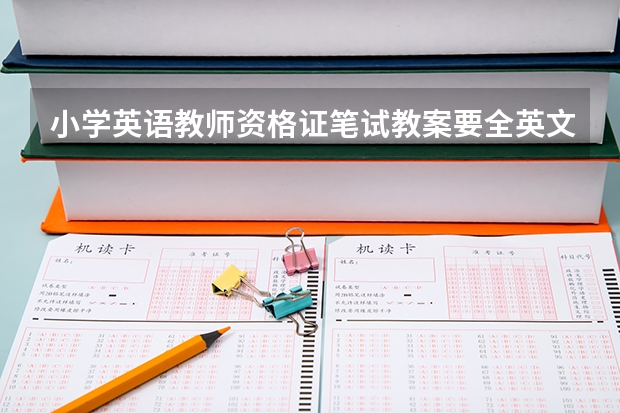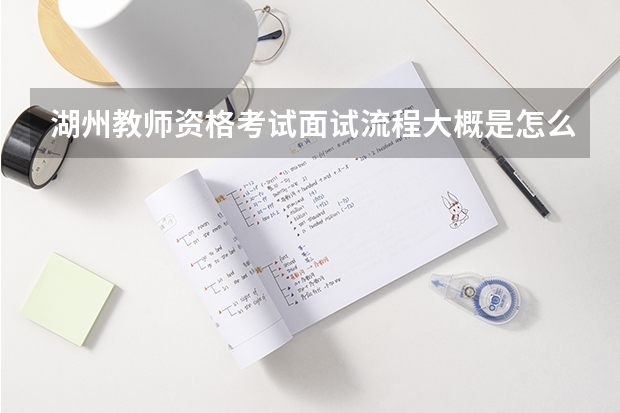小学英语教师资格证笔试教案要全英文吗?
2024-10-10 15:32:29 | 学涂社
本文目录一览:

小学英语教师资格证笔试教案要全英文吗?
教师资格证考试小学英语笔试教案不一定要全英语。 笔试主要考查申请人从事教师职业所应具备的教育理念、职业道德、法律法规知识、科学文化素养、阅读理解、语言表达、逻辑推理和信息处理等基本能力。
教育教学、学生指导和班级管理的基本知识;拟任教学科领域的基本知识,教学设计实施评价的知识和方法,运用所学知识分析和解决教育教学实际问题的能力。
省级教师资格考试机构按照《中小学教师资格考试考务工作规定》《中小学教师资格考试机考考务细则》组织实施笔试考务工作;按照《中小学教师资格考试面试工作规程》,制定面试实施细则,组织实施面试工作。 学涂社
面试一般按学科分组进行。每个考评组由不少于3名考官组成,设主考官1名。面试考官由高校专家、中小学和幼儿园优秀教师、教研机构专家等组成。
以上内容参考 东胜区政府——中小学教师资格考试暂行办法

初中英语教师资格证 英语试讲教案怎么写?
Unit 1Where’s your pen pal from?
Language goal
1.Function:
. In this unit students learn to talk about where people are from.
2.Vocabulary:
Canada ,France, Japan the United States, Australia, Singapore, The United Kingdom, China
3.Target language:
Where is your pen pal from? /she is from Canada.
Where does she live? /She lives in Toronto.
What language does she speak? /She speaks English and French.
4.Structures
Where questions /What questions
Key Points
Where questions /What questions
Difficulties
The names of different countries /The languages of different countries /The differences of “be” and “do” in the sentence.
Section A
1a. This activity provides guided listening and pronunciation practice using the target language.
1.Point to the numbered list of words. Play the recording the first time. Students only listen.
2.Play the recoding a second time. Ask Ss to repeat the names of the countries
3.Let Ss read the new words aloud individually or in pairs.
1b. This activity provides listening practice using the target language.
1.Point out the list of countries in 1a. Let Ss circle the names of the countries the people are talking about.
2.Play the recording the first time.
3.Play the recording a second time. Ss only listen.
4.Check the answers. (Canada, Australia, Japan, Singapore)
1c. This activity provides guided oral practice using the target language.
1. Point out the conversations in the picture and ask a student to read each one with you, then in pairs, in groups.
2. Ask various pairs to present a new one to the class.
2a. This activity provides reading and spelling practice using the target language.
1. Point out the list of countries. Read and ask Ss to repeat.
2. Point out the list of cities. Read and ask Ss to repeat aloud.
3. Ask Ss to work, offer help as needed.
4. Correct the work.
2b. This activity provides listening practice using the target language.
1. Call attention to the list of cities and countries in 2a. Let Ss circle them when they hear the conversations at the first time.
2. Play the recording a second time.
3. Check the answers.(Japan, Tokyo ,France ,Paris, Australia, Sydney)
2c. This activity provides listening and writing practice using the target language.
1. Call attention to the chart in 2c. Play the first conversation on the tape.
2. Play the recording again and have Ss fill in the chart.
3. Check the answers.
2d. This activity provides guided oral practice using the target language.
1. Call attention to the conversation in the picture.
2. Ask two Ss to read it to the class.
3. Ask Ss to work in small groups. Appoint a leader. Make sure everyone talks about at least one of the people on the chart.
4. Ask pairs of Ss to present their conversations to the class.
Grammar focus
1.Review the grammar box. Ask Ss to say the questions and answers.
1) Where is your pen pal from? He is from Australia.
2.Where does he live? He lives in Sydney.
2. Ask Ss to make more sentences with “where, from. and live
3a. This activity provides reading and spelling practice .
1. Point out the diagram and explain how it works.
2. Read the instructions to the class. Ask Ss to work in pairs.
3. Correct the answers.(1.China 2.The United States ,The United Kingdom, Australia,3.Singapore)
3b. This activity provides guided oral practice.
1. Call attention to the conversation in the picture. Ask two Ss to read it to the class. Answer their questions about the conversation.
2. Ask Ss to work in pairs.
3. Ask several students to perform their conversations for the class.
4. This activity provides listening, speaking, reading and writing practice
1. Explain the procedure.
2. Play the game.
Section B
1.This activity provides reading practice
1. Point out the language textbooks on the desktop.
2. Call attention to the notebook page with the countries listed.
3. Point out the sample answer .
4. Ask Ss to write the letter of the correct country in the box next to the title of each language book., ask Ss to work in pairs.
5. Ask a student to write his or her answers on the board.
2a. This activity provides listening practice.
1. Call attention to the conversation bubbles in the picture.
2. Play the recording, number each question you bear on the tape.
3. Play the recording a second time.
4. Check the answers.(Answers: What’s her name?1 /Where is she from?2 /Does she have any brothers and sister? 3 /Does she speak English?)
2b. This activity provides listening and writing practice.
1. Call attention to the numbered questions in 2a,ask different Ss to read it
2. Point out the answer blanks in 2b and the sample answer.
3. Play the tape and ask Ss to complete the answers individually.
4. Correct the answers.
2c. This activity provides oral practice
1. Ask each student to work with a partner. Ask and answer
2. Practice one or two exchanges with a student. Then work in pairs.
3. Ask a pair of Ss to perform the conversation for the class.
3a. This activity provides reading and writing practice.
1. Call attention to the letter. Read it to the class or a student to read it for you.
2. Point to the four questions beneath the letter.
3. As Ss work, move around .and help them.
4. When they are finished, ask the questions orally and ask Ss to answers.
5. Write the correct answers on the board so that Ss can check the spelling and other details of their answers.(1.Toronto,Canada,2.A pen pal in China 3.English and a little French. 4.He likes going to the movies with his friends and playing sports. )
3b. This activity provides reading and writing practice.
1. Call attention to the letter from Tom King.
2. Point out the blanks in the letter. Ask them to find the information to complete the letter .
3. Read the letter to the class saying “blank”.
4. Ask Ss to write the missing words on the blank lines individually.
5. Correct the answers.
3c. This activity provides open-ended practice.
Ask Ss to make their own information card and then write an email about themselves. Tell them to use 3b as an example.
以七年级下册第一单元为例的教案。教案就是要写出教学目标,教学重难点,教学策略,教学流程。用全英文写。
试讲时最好用简单易懂的口语与学生,显得比较专业和亲切。学生配合好,评委的评价就好了。可以带中文,前提是学生都比较茫然,不知道怎么做时。

教师资格证考试中,英语教案要全英文编写吗?还是可以中英结合,还有,面试中考官是用英文问问题吗?
学涂社(https://www.cjqian.com)小编还为大家带来教师资格证考试中,英语教案要全英文编写吗?还是可以中英结合,还有,面试中考官是用英文问问题吗?的相关内容。
肯定是要用全英文编写,考官也是用英文问问题,下面具体介绍一下:
1、考前要进行抽签,先机器随机抽取两道题,考生快速浏览后决定取其中一篇;
2、接下来便是备课,共二十分钟,会发给您一张纸和考试题目,要在纸上写上教案。当然,教案不一定要和书上的标准模板一样一项不拉地写下来,您只要写上课的重点就好了。
拓展资料:
教师资格证考试,是由教育部考试中心官方设定的教师资格考试。
2012年之前,教师资格考试是由各省自行组织命题和考试。主要针对非师范专业需要考取教师资格证的考生。(师范专业学校直接颁发教师资格证)
2012年后,教师资格考试纳入统考试点和省考相结合的模式。到2018年除了新 疆,内蒙古,西藏三个地区外其他省份全部纳入了教师资格统考,由教育部考试中心出题,地方教育考试院主考。主要针对师范专业和非师范专业需要考取教师资格证的考生。
参考资料: 教师资格证考试百度百科
以上就是学涂社为大家带来的小学英语教师资格证笔试教案要全英文吗?,希望能帮助到大家!更多相关文章关注学涂社:www.cjqian.com免责声明:文章内容来自网络,如有侵权请及时联系删除。

小学英语教师资格证面试要全英文吗因为小学英语教师资格面试没有严格的规定,考生结合中英文可以根据自己的情况。此外,小学教师面对小学生,所以在真正的课堂上也需要结合汉语教学和解释,以便更好地向学生传授知识,所以小学英语教师资格面试不能使用全英语。对于教师资格考试的面试环节,如果其他类型的英语面试明确规定使用全英语,则必须使用全英语。在其他情况下,您可以根据自己的实际情况进行调整。但全英

2023小学英语教师资格证考试内容要英语几级2023小学英语教师资格证考试内容2023年上半年的教师资格证考试正在进行,今年报考人数创下历史新高。2023小学英语教师资格证考试内容有哪些?小学英语教师资格证的报考需要什么条件?考小学英语教师资格证要英语几级?接下来由小编为大家详细解答。2023小学英语教师资格证考试内容小学英语教师资格证考试分为笔试和面试两个部分,小学教师资格

教师资格证考试英语的要全英试讲?大部分地区要求全英文回答,所以考生一定要学会随机应变,灵活处理问题,不要紧张,考前一定多加练习。全英试讲能够裤行给考官最直观的感受,是最能体现个人专业魅力的方式,能全英文最好全英文。需晌纯盯须明确的一点是英语专业的考生采用全英试讲最能打动、吸引考官。英语是一门语言,学习英语最重要的目的就是沟通交流,因此教师的语言水平是否扎实是非常关键的。需须做到语言的

小学英语教师资格证考试要求全英吗?教师资格证考试小学英语笔试教案不一定要全英语。笔试主要考查申请人从事教师职业所应具备的教育理念、职业道德、法律法规知识、科学文化素养、阅读理解、语言表达、逻辑推理和信息处理等基本能力。教育教学、学生指导和班级管理的基本知识;拟任教学科领域的基本知识,教学设计实施评价的知识和方法,运用所学知识分析和解决教育教学实际问题的能力。省级教师资格考

教师资格证面试英语试讲需要全要英文吗培训面试教师证许多同学面对教资面试都手足无措可以带材料去考场吗?考试当时出成绩吗?……小编为你揭秘教资面试全流程让你心里有底第一步:候考1.考生持面试准考证、身份证,按时到达考点,进入候考室可将教材带入,但手机等禁带物品不可进入候考室。2.身份核验与资格审查。逐一核验考生的准考证、身份证、户籍或人事关

山东省潍坊小学英语教师资格证面试试讲需要全英文吗?是全英文的。讲的内容是从题库里抽取的。教师资格统考面试程序(一)候考:考生持面试准考证、身份证件,按时到达测试考点,进入候考室候考。(二)抽题:根据考点安排,登陆“面试测评软件系统”,计算机从题库中抽取一组试题,考生任选其中一道试题,系统打印备课纸及试题清单。(三)备课:考生持备课纸、试题清单进入备课室,撰写教案(或演示活动方案),备课20分

初中英语教师资格证面试教案模板:TheSpiritofChristmas【#教师资格证#导语】为了帮助各位考生系统的复习教师资格考试,全面的了解教师资格考试的相关重点,整理了初中英语教师资格证面试教案模板:TheSpiritofChristmas,希望对您参加本次考试有所帮助!一、教学目标在本节课结束时,学生将能够:完全读懂文章“TheSpiritofChristmas”;掌握阅

小学语文教师资格证面试要笔试吗?是要面试的。小学教师资格考试是面试才分学科,具体分为:语文、数学、英语、社会、科学、体育、音乐美术,心理健康教育,信息技术,小学全科,考试任选一科报考即可。小学语文教师资格证面试首先是你的语言表达能力要达标,就是普通话等级要达到二级甲等的水平,各个地方的要求不一样,但是二级甲等是最保险的了。语文面试的时候着装和面部表情管理也非常重要,如果你
-
 怎么举报教师资格证监考老师号码
怎么举报教师资格证监考老师号码2024-04-21 07:35:58
-
 佛山初中前10排名的学校(佛山学校)
佛山初中前10排名的学校(佛山学校)2023-06-17 17:11:53
-
 我是一名大专生,我想报考教师资格证.我是非专业的.不知如何去报考?请回答我!
我是一名大专生,我想报考教师资格证.我是非专业的.不知如何去报考?请回答我!2024-04-21 06:17:12
-
 教师资格证等级都有哪些?
教师资格证等级都有哪些?2024-04-19 22:48:24
-
 上211大学最低需要多少分(211大学)
上211大学最低需要多少分(211大学)2023-06-28 23:34:36
-
 湖州教师资格考试面试流程大概是怎么样的?
湖州教师资格考试面试流程大概是怎么样的?2024-04-21 00:45:57